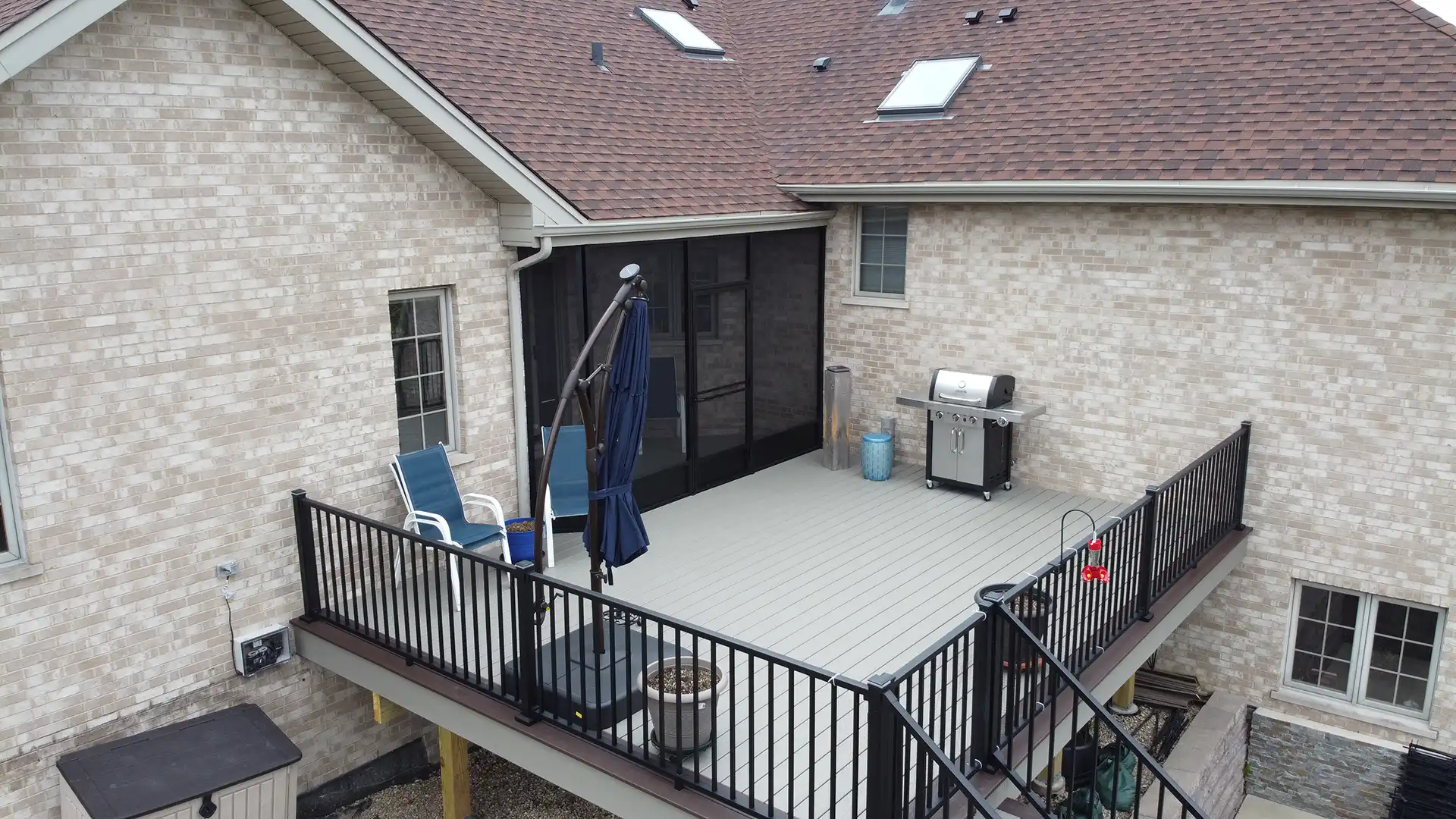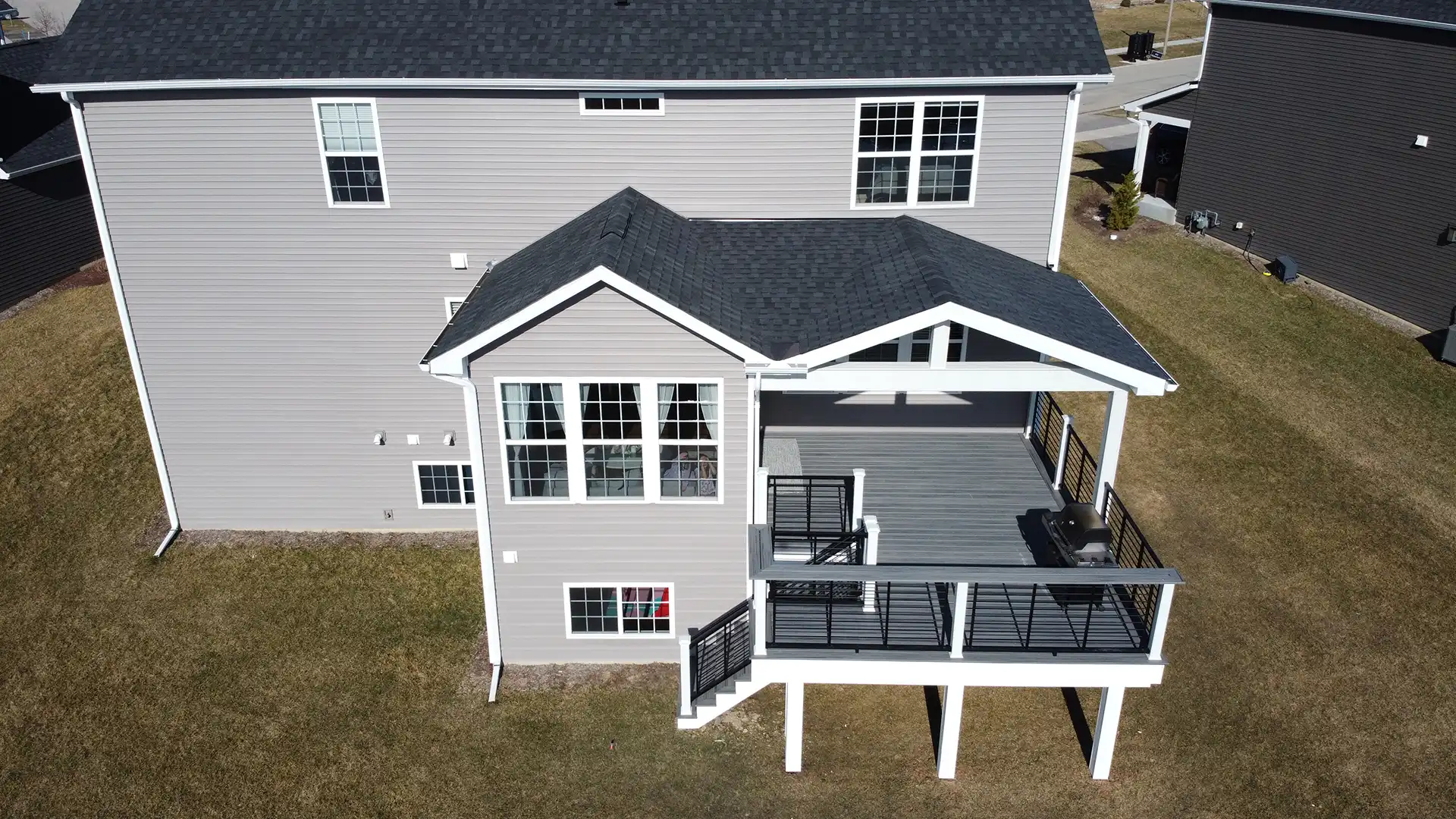Mitchell Construction Custom Decks brings expertise in crafting three- and four-season rooms for homeowners in the Chicago suburbs. A three-season room allows you to enjoy outdoor living in mild weather, while a four-season room offers comfort no matter the season.
Deciding which option suits your needs best depends on how you plan to use the space. A three-season room extends outdoor time in spring, summer, and fall. In contrast, a four-season room provides an enclosed space that can be enjoyed throughout the year. This guide will compare each type’s features, benefits, and considerations, helping you make an informed choice.
What is a 3-Season Room?
Three-season rooms, also known as three-season sunrooms and 3-season porches, offer a comfortable way to enjoy outdoor views without exposure to the elements. They are designed for milder weather conditions and are perfect for spring, summer, and fall relaxation.
Constructed with a lightweight aluminum frame and single-pane windows, three-season rooms, which can also be screen rooms and enclosures, are not intended for extreme temperature fluctuations, such as Chicago’s cold winter months. Using lighter materials, including single-pane glass and aluminum framing, creates an open and airy atmosphere while lowering construction costs.
They have limited climate control because they are not connected to the home’s heating or air conditioning. To extend usability in colder weather, homeowners may use portable heaters, fans, or electric fireplaces.
What is a 4-Season Room?
Four-season rooms, also called four-season sunrooms or 4-season porches, provide a fully insulated living space for use throughout the year. Unlike their three-season counterparts, these rooms are integrated with the home, ensuring comfort no matter the weather.
Constructed like a traditional home addition, four-season room additions have enhanced insulation and structural components. They seamlessly connect to the main living space and serve as anything from a family room to a home office.
Built with high-quality materials like vinyl, wood, and reinforced aluminum, these rooms feature dual or triple-pane glass to enhance insulation and maintain consistent temperature and energy efficiency. Integrated with the home’s HVAC system, these rooms offer seamless heating and cooling, creating a comfortable space that can be enjoyed year-round.
Comparing the Key Differences
Here’s how three and four-season rooms differ in terms of usability, materials, and cost:
- Seasonal Use: A three-season room is best for the warmer months, while a four-season room is designed for year-round comfort, including the colder months.
- Insulation & Climate Control: Four-season rooms have superior insulation and HVAC integration, providing consistent temperature control. Three-season rooms are less insulated, making them more suitable for mild weather.
- Cost Differences: A four-season room has a higher initial cost due to its advanced construction and materials. However, this investment results in long-term usability and adds more value to your home. In contrast, a three-season room is more budget-friendly for seasonal enjoyment.
Three Season Rooms vs Four Season Rooms: Pros & Cons
| Three Season Room | Four Season Room | |
|---|---|---|
| Pros |
|
|
| Cons |
|
|
Factors to Consider When Choosing Your Outdoor Room
Consider your preferences and priorities when deciding between three and four-season rooms.
- Climate & Location: Weather extremes are common in the Chicago suburbs. A four-season room provides year-round usability, while a three-season room is suitable for seasonal use.
- Intended Use: A four-season room is ideal for versatile activities that require consistent comfort (e.g., family gatherings or a home office). A three-season room meets those needs for more casual use during pleasant weather.
- Budget: A three-season room will cost less and provide a quick solution for additional space. A four-season room requires a larger investment but offers a long-term living area and greater property value.
Let Mitchell Construction Custom Decks Help You Decide
Choosing the right sunroom, screen room, three-season, or four-season room depends on your needs and how you envision using the space. Mitchell Construction Custom Decks can help you navigate your options and select the perfect solution for your Chicago-area home. Our team will work with you to customize a sunroom that matches your budget and lifestyle. Contact us to schedule a consultation and plan a space you’ll enjoy for years!




